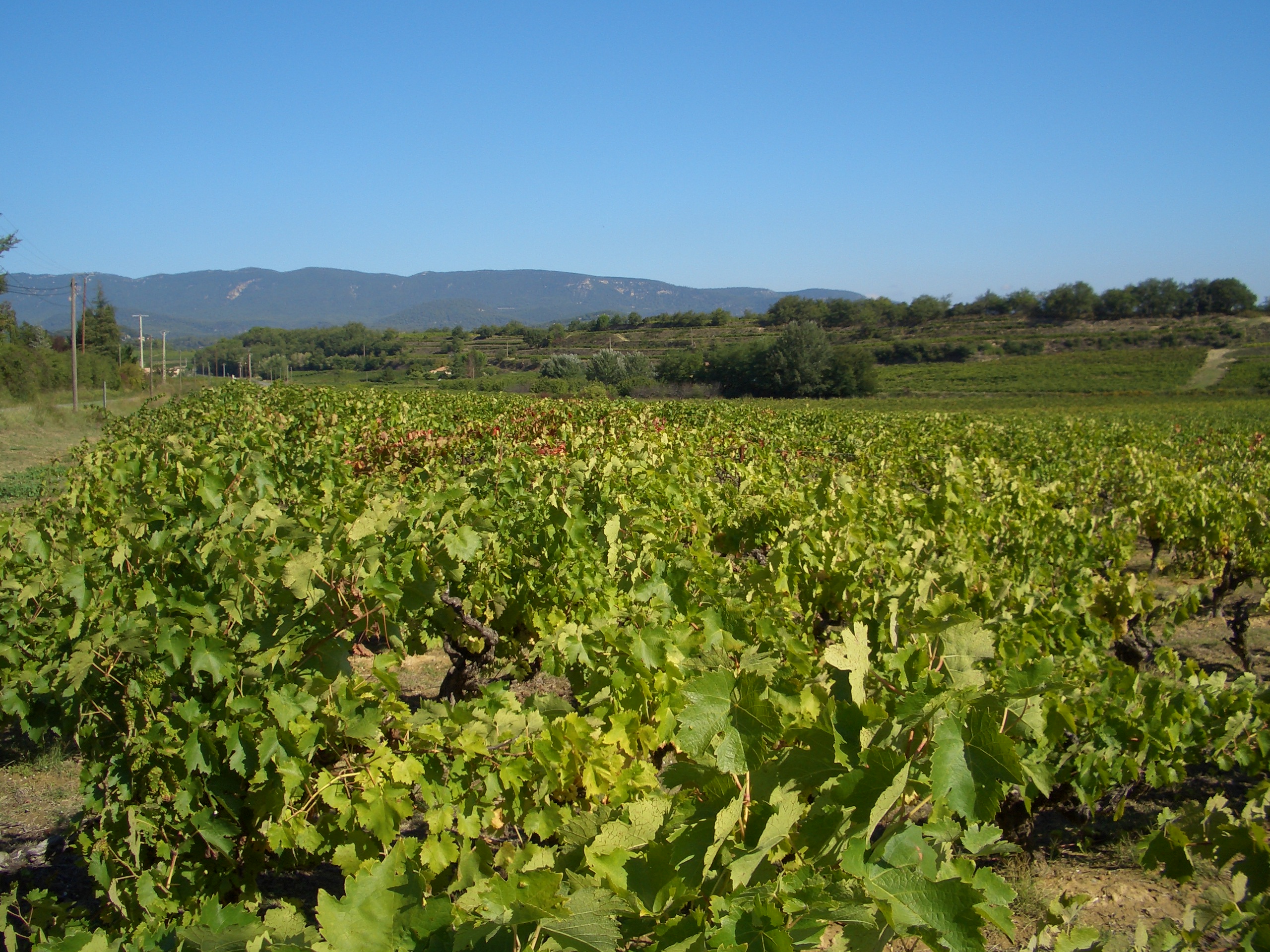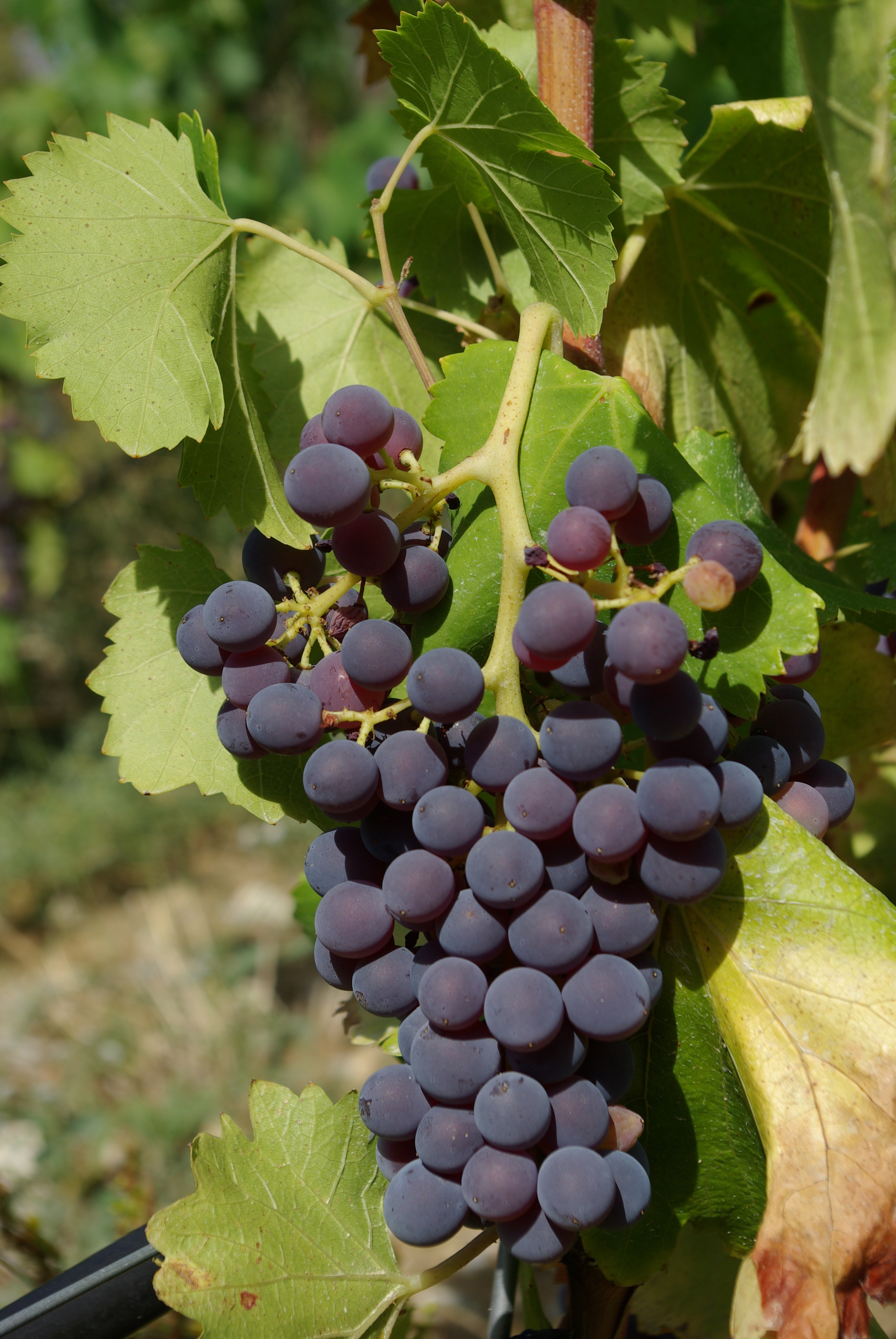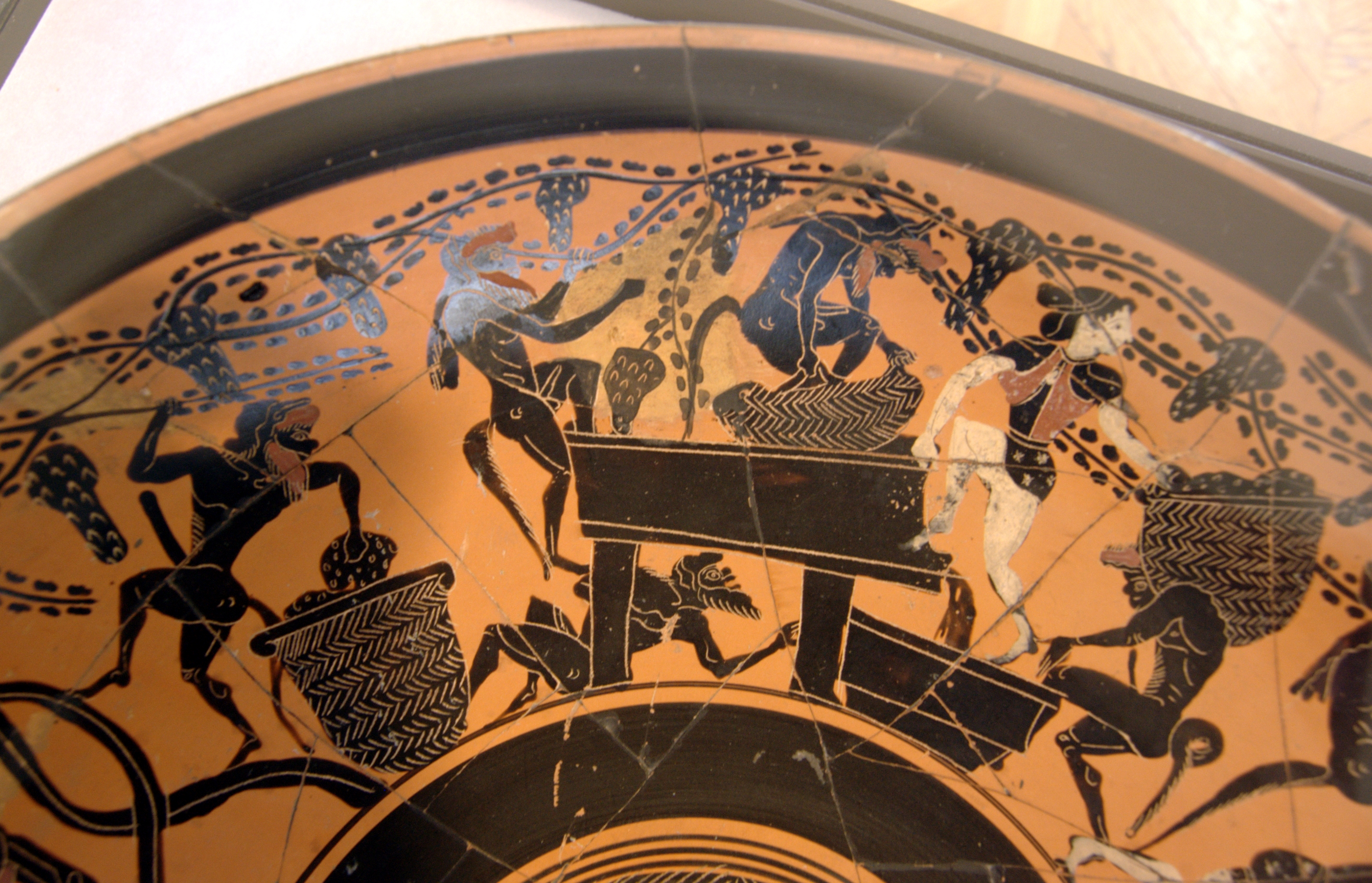|
Bouteillan Noir
Bouteillan noir is a red French wine grape variety that is grown in the Provence wine region of southern France. While the grape has been recorded growing in the Vaucluse region since at least the early 18th century, today the grape is virtually extinct. Despite sharing synonyms with another Provençal grape, Calitor, and the Languedoc wine grape Aramon noir, Bouteillan noir has no known relationship with either of those variety. The white Provençal grape Colombaud (not to be confused with the Cognac and South African wine grape Colombard) was once thought to be a white berried color mutation of Bouteillan noir but research conducted by Linda Bisson of the University of California, Davis shows that while the two grapes are likely related, one is not a color mutation of the other.J. Robinson, J. Harding and J. Vouillamoz ''Wine Grapes - A complete guide to 1,368 vine varieties, including their origins and flavours'' pg 131 Allen Lane 2012 History Bouteillan noir has been recor ... [...More Info...] [...Related Items...] OR: [Wikipedia] [Google] [Baidu] |
French Wine
French wine is produced all throughout France, in quantities between 50 and 60 million hectolitres per year, or 7–8 billion bottles. France is one of the largest wine producers in the world, along with Italian, Spanish, and American wine-producing regions. French wine traces its history to the 6th century BCE, with many of France's regions dating their wine-making history to Roman times. The wines produced range from expensive wines sold internationally to modest wines usually only seen within France such as the Margnat wines of the post war period. Two concepts central to the better French wines are the notion of ''terroir'', which links the style of the wines to the locations where the grapes are grown and the wine is made, and the ''Appellation d'origine contrôlée'' (AOC) system, replaced by the Appellation d'Origine Protégée (AOP) system in 2012. Appellation rules closely define which grape varieties and winemaking practices are approved for classification ... [...More Info...] [...Related Items...] OR: [Wikipedia] [Google] [Baidu] |
Budding (vine)
The annual growth cycle of grapevines is the process that takes place in the vineyard each year, beginning with bud break in the spring and culminating in leaf fall in autumn followed by winter dormancy. From a winemaking perspective, each step in the process plays a vital role in the development of grapes with ideal characteristics for making wine. Viticulturalists and vineyard managers monitor the effect of climate, vine disease and pests in facilitating or impeding the vine's progression from bud break, flowering, fruit set, veraison, harvesting, leaf fall and dormancy-reacting if need be with the use of viticultural practices like canopy management, irrigation, vine training and the use of agrochemicals. The stages of the annual growth cycle usually become observable within the first year of a vine's life. The amount of time spent at each stage of the growth cycle depends on a number of factors-most notably the type of climate (warm or cool) and the characteristics of the grap ... [...More Info...] [...Related Items...] OR: [Wikipedia] [Google] [Baidu] |
Grenache
Grenache () or Garnacha () is one of the most widely planted red wine grape varieties in the world. Niels Lillelund: ''Rhône-Vinene'' p. 25, JP Bøger – JP/Politikens Forlagshus A/S, 2004. . It ripens late, so it needs hot, dry conditions such as those found in Spain, where the grape most likely originated. It is also grown in the Italian island of Sardinia, the south of France, Australia, and California's Monterey AVA and San Joaquin Valley. It is generally spicy, berry-flavored and soft on the palate and produces wine with a relatively high alcohol content, but it needs careful control of yields for best results. Characteristic flavor profiles on Grenache include red fruit flavors (raspberry and strawberry) with a subtle, white pepper spice note. Grenache wines are highly prone to oxidation, with even young examples having the potential to show browning (or "bricking") coloration that can be noticed around the rim when evaluating the wine at an angle in the glass. As ... [...More Info...] [...Related Items...] OR: [Wikipedia] [Google] [Baidu] |
Grenache Blanc
Grenache blanc (also known as garnatxa blanca in Catalonia) is a variety of white wine grape that is related to the red grape Grenache. It is mostly found in Rhône wine blends and in northeast Spain. Its wines are characterized by high alcohol and low acidity, with citrus and or herbaceous notes. Its vigor can lead to overproduction and flabbiness. However, if yields are controlled, it can contribute flavor and length to blends, particularly with Roussanne. Since the 1980s, it has been the fifth most widely planted white wine grape in France after Ugni blanc, Chardonnay, Semillon and Sauvignon blanc.J. Robinson (ed) ''"The Oxford Companion to Wine"'' Third Edition pg 334 Oxford University Press 2006 History Grenache blanc is thought to have originated as a mutation of the red version of Grenache in Spain. It then spread across the Pyrenees to France France (), officially the French Republic ( ), is a country primarily located in Western Europe. It also comprises ... [...More Info...] [...Related Items...] OR: [Wikipedia] [Google] [Baidu] |
Pinot Noir
Pinot Noir () is a red-wine grape variety of the species ''Vitis vinifera''. The name may also refer to wines created predominantly from pinot noir grapes. The name is derived from the French language, French words for ''pine'' and ''black.'' The word ''pine'' alludes to the grape variety having tightly clustered, pinecone–shaped bunches of fruit. Pinot Noir grapes are grown around the world, mostly in cooler climates, and the grape is chiefly associated with the Burgundy (wine), Burgundy region of France (wine), France. Pinot Noir is now used to make red wines around the world, as well as champagne, Sparkling wine, sparkling white wines such as the Italian wine, Italian Franciacorta, and Wine from the United Kingdom, English sparkling wines. Regions that have gained a reputation for red pinot noir wines include the Willamette Valley (wine), Willamette Valley of Oregon (wine), Oregon; the Carneros (AVA), Carneros, Central Coast (AVA), Central Coast, Sonoma Coast AVA, Sonoma ... [...More Info...] [...Related Items...] OR: [Wikipedia] [Google] [Baidu] |
Pinot Blanc
Pinot blanc is a white wine grape. It is a point genetic mutation of Pinot noir. Pinot noir is genetically unstable and will occasionally experience a point mutation in which a vine bears all black fruit except for one cane which produces white fruit. Origins and regional production In Alsace, Germany, Luxembourg, Italy, Hungary, Czech Republic and Slovakia, the wine produced from this grape is a full-bodied white. In Germany, where it is known as Weißer Burgunder or Weißburgunder, there were of Pinot blanc in 2018. The most powerful versions are usually made in Baden and Palatinate. In 2018, there were of Pinot blanc in France, with most of the plantations found in Alsace, where it is used for both still white wines and is the most common variety used for sparkling wine, Crémant d'Alsace. Somewhat confusingly, the designation "Pinot blanc" for Alsace AOC wine does not necessarily mean that the wine is varietally pure Pinot blanc. (This is in difference to Pinot gris, wh ... [...More Info...] [...Related Items...] OR: [Wikipedia] [Google] [Baidu] |
Ampelographer
Ampelography ( ἄμπελος, "vine" + γράφος, "writing") is the field of botany concerned with the identification and classification of grapevines, ''Vitis'' spp. Traditionally this has been done by comparing the shape and colour of the vine leaves and grape berries; more recently the study of vines has been revolutionised by DNA fingerprinting. Early history The grape vine is an extremely variable species and some varieties, such as Pinot, mutate particularly frequently. At the same time, the wine and table grape industries have been important since ancient times, so large sums of money can depend on the correct identification of different varieties and clones of grapevines. The science of ampelography began seriously in the 19th century, when it became important to understand more about the different species of vine, as they had very different resistance to disease and pests such as phylloxera. Many vine identification books were published at this time, one of which ... [...More Info...] [...Related Items...] OR: [Wikipedia] [Google] [Baidu] |
Blavette
Calitor or Calitor noir is a red French wine grape variety. It was previously widely cultivated in southern France, in particular in Provence, but is now very rare, almost extinct. Historically used as mainly a blending variety, Calitor gives high yields and produces a light-bodied and lightly colored wine. When grown on hillside sites, it can give a wine of character. Calitor is a very old variety that was first noted growing in southern France in 1600. The grape has produced two color mutations, Calitor blanc, which has been growing in the Costières de Nîmes region since at least 1782, and a pink-berried Calitor gris which are both not widely grown. Plantings of Calitor noir, itself, have been steadily declining since the early 20th century as French wine producers turned first to the more reliably productive Aramon noir and later to higher quality international varieties such as Cabernet Sauvignon and Syrah. In 1968, there were of Calitor noir in France but by 2008 tha ... [...More Info...] [...Related Items...] OR: [Wikipedia] [Google] [Baidu] |
Powdery Mildew
Powdery mildew is a fungal disease that affects a wide range of plants. Powdery mildew diseases are caused by many different species of ascomycete fungi in the order Erysiphales. Powdery mildew is one of the easier plant diseases to identify, as its symptoms are quite distinctive. Infected plants display white powdery spots on the leaves and stems. The lower leaves are the most affected, but the mildew can appear on any above-ground part of the plant. As the disease progresses, the spots get larger and denser as large numbers of asexual spores are formed, and the mildew may spread up and down the length of the plant. Powdery mildew grows well in environments with high humidity and moderate temperatures. Greenhouses provide an ideal moist, temperate environment for the spread of the disease. This causes harm to agricultural and horticultural practices where powdery mildew may thrive in a greenhouse setting. In an agricultural or horticultural setting, the pathogen can be controlle ... [...More Info...] [...Related Items...] OR: [Wikipedia] [Google] [Baidu] |
Botrytis Bunch Rot
''Botrytis cinerea'' is a necrotrophic fungus that affects many plant species, although its most notable hosts may be wine grapes. In viticulture, it is commonly known as "botrytis bunch rot"; in horticulture, it is usually called "grey mould" or "gray mold". The fungus gives rise to two different kinds of infections on grapes. The first, grey rot, is the result of consistently wet or humid conditions, and typically results in the loss of the affected bunches. The second, noble rot, occurs when drier conditions follow wetter, and can result in distinctive sweet dessert wines, such as Sauternes (wine), Sauternes or the Aszú of Tokaji/Grasă de Cotnari. The species name ''Botrytis cinerea'' is derived from the Latin for "grapes like ashes"; although poetic, the "grapes" refers to the bunching of the fungal spores on their Conidium, conidiophores, and "ashes" just refers to the greyish colour of the spores ''en masse''. The fungus is usually referred to by its anamorph (asexual form ... [...More Info...] [...Related Items...] OR: [Wikipedia] [Google] [Baidu] |
Viticultural Hazards
This is a list of diseases of grapes (''Vitis'' spp.). Bacterial diseases Fungal diseases Miscellaneous diseases and disorders Nematodes, parasitic Phytoplasma, virus and viruslike diseases See also *''Ampeloglypter ater'' *''Ampeloglypter sesostris'' *''Ampelomyia viticola'' *''Eupoecilia ambiguella'' *Great French Wine Blight *Japanese beetle *List of Lepidoptera that feed on grapevines *''Maconellicoccus hirsutus'' *''Otiorhynchus cribricollis'' *''Paralobesia viteana'' *''Pseudococcus maritimus'' *''Pseudococcus viburni'' *''Zenophassus'' References External links Diseases of Grapevines information from Cooperative Extension Common Names of Diseases, The American Phytopathological Society * [http://arquivo.pt/wayback/20160523145652/http://winegrapes.wsu.edu/virology/ virus diseases of the grapevine] {{Viticulture Grape diseases, * Lists of plant diseases, Grape ... [...More Info...] [...Related Items...] OR: [Wikipedia] [Google] [Baidu] |
Vintage
Vintage, in winemaking, is the process of picking grapes and creating the finished product—wine (see Harvest (wine)). A vintage wine is one made from grapes that were all, or primarily, grown and harvested in a single specified year. In certain wines, it can denote quality, as in Port wine, where Port houses make and declare vintage Port in their best years. From this tradition, a common, though not strictly correct, usage applies the term to any wine that is perceived to be particularly old or of a particularly high quality. Most countries allow a vintage wine to include a portion of wine that is not from the year denoted on the label. In Chile and South Africa, the requirement is 75% same-year content for vintage-dated wine. In Australia, New Zealand, and the member states of the European Union, the requirement is 85%. In the United States, the requirement is 85%, unless the wine is designated with an AVA, (e.g., Napa Valley), in which case it is 95%. Technically, the 85% r ... [...More Info...] [...Related Items...] OR: [Wikipedia] [Google] [Baidu] |






.jpg)

